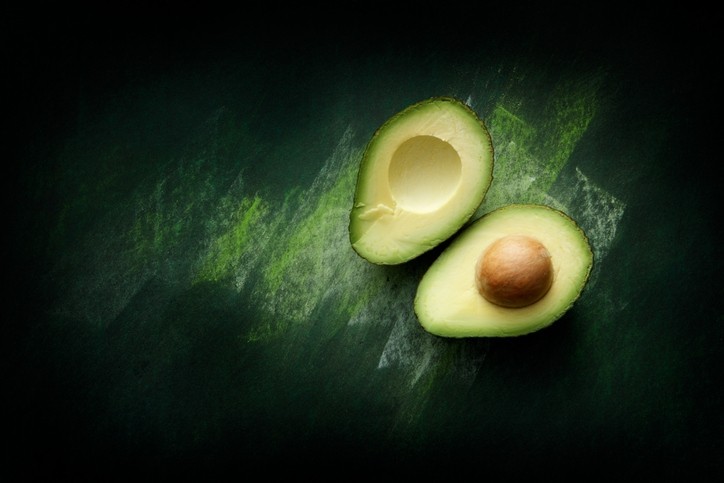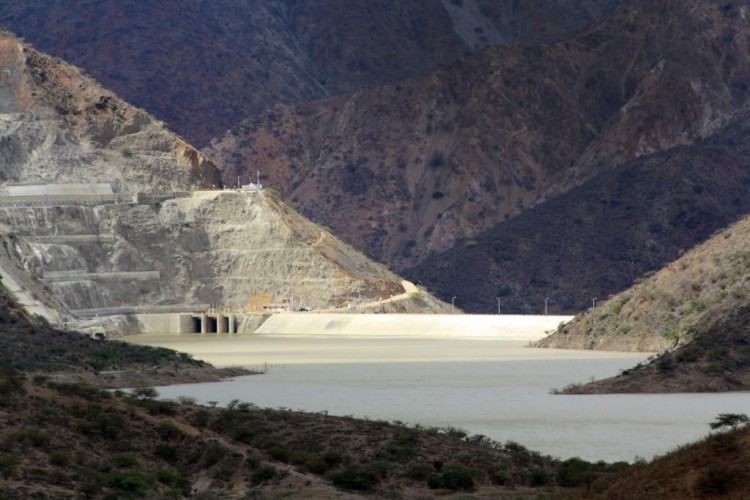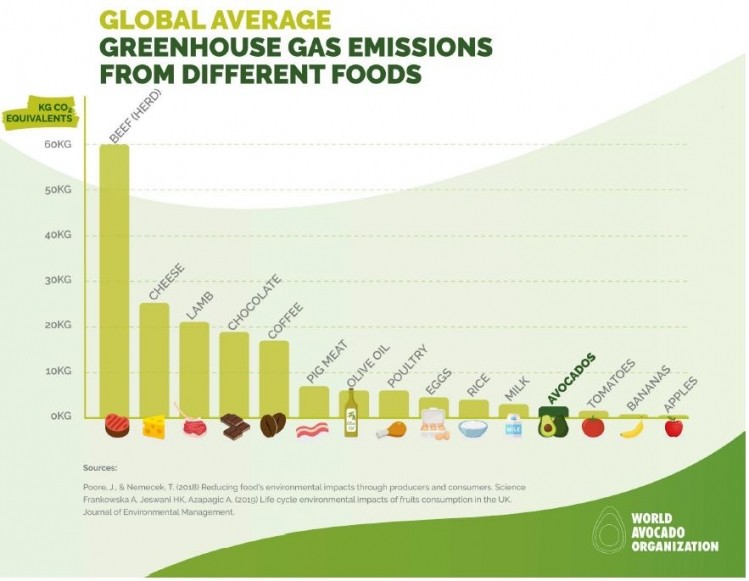The search for the ‘super Hass’: How the avocado industry is battling ‘misconceptions’ about the ‘world’s favourite superfood’

“It's a crop that's come out of nowhere and it’s going places.” So says Zac Bard, Chairman of the World Avocado Organization, the group set up in 2016 to represent growers, importers and exporters around the world. Its membership now includes 800 members from Spain, Peru, Colombia, South Africa, Mozambique, Tanzania, Mexico, and Zimbabwe. “Avocados have a really good story to tell,” he stressed.
Let’s start with the health benefits. These may possibly sound old hat, but little was known 20 years ago about the unique nutritional properties of avocados, according to Bard, and studies are revealing more about this ‘uniquely nutritious superfood’.
Gram for gram, avocados contain more potassium than bananas, it has been claimed. Two servings of avocado a week lowered the risk of cardiovascular disease, according to a study published in the Journal of the American Heart Association. The nutrients and bioactive compounds in avocados may help reduce the risk of metabolic syndrome. Avocados are rich in fibre for healthy digestion. A recent study has found that consuming an avocado a day could improve cognitive function in older adults. They can also benefit the skin thanks to their unique combination of monounsaturated fatty acids, carotenoids, vitamins (including antioxidants vitamins C and E) and phenolic compounds.
The super trends avocados can leverage
Avocados also boast “unrivalled diversity for inclusion as part of a main meal or snack, for breakfast, lunch, or dinner – cooked or raw, savoury, or sweet,” Bard told FoodNavigator. The avocado is therefore well-placed to tap into a host of hot trends in the food industry – from healthy snacking, healthy ageing, gut health and plant-based diets. Avocado oil is another rising trend, identified by the WAO. The fruit can also potentially leverage the upcycling trend. “Nothing is wasted from avocados,” explained Bard. “The waste from the oil makes compost which goes back to avocado orchards which improves the carbon content of the ground. There's also research into using the seed to make biodegradable knives and forks and of course in the seed and skin there are unique compounds used in medicine.”
Why Scandinavia is the hot market
It's no wonder the avocado is now almost a staple part of the European diet. Globally, 2,461,000 tonnes of avocados were exported from growing countries last year (June 2021-May 2022), according to the Agricultural Research Center for International Development. Most (43%) go to the US. Europe comes in second, importing 34%. Peru is by far Europe’s top supplier, followed by Colombia, Chile, Israel and Spain. Though Spain’s figure questionable due to a high number of re-exports.
Avocado consumption in Europe rose 7%, by around 55,000 tonnes, compared to the previous year. France is the biggest consumer, followed by Germany and the UK. Scandinavians eat the most avocados per person, however. The Danes boast a per capita consumption of 3kg per year, compared to 2.3 kg in France and 1.5 kg in the UK.
“While Germany, the UK and France will continue to lead the way, avocados are growing in popularity in many other countries such as Italy, which saw a 37% increase in consumption compared to the previous year, as well as Eastern European countries like Poland, Slovenia, and Croatia where people are also eating more and more avocados,” said Bard. "We are going to start to see Asia becoming a more and more important market,” he added. “Roughly, Asia has two thirds of the world’s population. Avocado is something that's very new for most of them and we are starting to see consumption in places like China, India, Thailand.”
Sustainability question marks
But there have been many warnings that our love for avocados is not sustainable. A report from Carbon Footprint, for example, estimated that a packet of two small avocados has a CO2 footprint of 846.36 grams, nearly twice the amount of a kilo of bananas. According to WAO, however, yes – the carbon footprint of avocados is higher than bananas, but still comparable to other fruits we eat, and much lower than that of many other food categories. The industry also boasts carbon capture potential. Avocados grow on perennial trees, which can absorb up to 20kg carbon from the atmosphere per year.
There are also complaints about the food miles involved in exporting avocados, mainly from South America to Europe. But most, 99.9 per cent, said Bard, are transported by ship to Europe. Greenhouse gas emissions from sea freight are 25 times lower than vehicle transportation, and 145 times lower than air freight, he pointed out. This does however still mean the crop is picked before it’s ripe and shipped in energy intensive temperature-controlled storage.
Water usage is an issue too. Large quantities of water are used for irrigation of avocados. Consumption associated with the UK’s avocado intake from five South American countries is estimated to stand at over 25 million cubic metres annually – equivalent to 10,000 Olympic-sized swimming pools. In response, the WAO again said it ‘wasn’t worse in class’. It claims the avocado’s global water footprint is still much lower than that of other popular foods. “Avos are in line with your other fruit categories apples and bananas,” Bard told us. “But if one considers that avocadoes have got a much higher nutrient and vitamin composition, avos packs a very high punch for the amount of water it uses.”
The water issue greatly depends on location too. “There's no answer to how much water exactly is needed for an avo to grow,” he elaborated. “They grow across a wide range of climates across the world. In terms of irrigation water required for production it's different in different parts. In some parts where there's lot of rain, less than 10 litres are required. Places like Colombia are completely rain-fed. In hotter, dryer countries it’s up to a max of 1,250 litres but this is a 10-year old figure - there have been a lot of cultural improvements that are bringing this figure down.”
The growing of avocados continues to become more and more sustainable with an ever-reducing ecological footprint, Bard insisted. “There's been much improvement in the last 10 years in the cultural practices in the way avocadoes are irrigated. That reduces the water footprint even further. For example, advanced irrigation and water supply technologies have substantially lowered water consumption and continue to reduce the water footprint of avocado production.
“Drip irrigation can reduce water usage by 50% and can improve your tonnages. Digital agriculture has also helped us to predict and forecast and model exactly how much water is taken up and lost so you replace it without wasting it.”
Through drip irrigation, the WAO organisation claims Westfalia-owned farms in Chile, South Africa and Portugal have reduced water use by 43%. It adds that digital agriculture programmes in Chile have seen a reduction in water use of at least 25% while farms in Spain have seen a reduction in water use of up to 50%.
“There are several projects in coastal Peru, one of which is called the Olmos Valley project in Peru,” revealed the WAO Chairman. “It doesn't rain there at all and a very clever canal system is redirecting water which comes from a very high rainfall area that would have otherwise gone into the Atlantic Ocean. It creates an oasis for fruit and veg in over 24,000 hectares. It also creates jobs; previously this was a desert; nothing would grow there. In my mind it's one of the modern wonders of the world where a desert has literally been re-created into an oasis. It's something really special.”
The WAO further adds that in Peru the growth of the agricultural sector – it is now the second biggest avocado grower in the world – has contributed to a reduction in poverty from 80% in 2004 to 36% in 2018 in rural communities. "I’ve seen the country transformed on the back of agriculture in rural areas its been an amazing transformation and avocados have played a role in that,” Bard told us.

Cartel incursions into the avocado industry
There have also been disturbing reports of violent drug cartels that are taking over parts of the industry. But however alarming these stories are, this is a problem specific to Mexico where the vast majority of avocadoes go to the US market, not Europe’s.
In Europe, we get our avocados from over 15 different countries across four continents, revealed the WAO. However, the top supplier by quite some way, is Peru which supplies 35% of the avocados we eat, over three times the number of avocados supplied by Colombia which comes in second place, followed closely by Chile. Moving away from Latin America, in the last year, Israel and Spain experienced bumper crops compared to previous years, landing them in fourth and fifth place respectively.
Local food security
Then there are the complaints that avocado growing is often prioritized above other crops, which has a negative impact on local food security. It is increasingly no longer the case that avocados are grown primarily for export, stressed the WAO. “Some of the largest consumers per capital of avos in the world are in countries that grow them,” responded Bard. “Israel, Chile and Mexico have consumption of close to 10 kilos a year. So where you plant avos people will eat them. It's a total myth that planting avos they all get exported. At most, 60% and the rest are consumed locally.”
Monocropping is another myth, he argues. Despite their huge rise in popularity, avocados make up only 3% of world fruit production. “Avos are not so vast an expanse that people are starving because avos are taking over local food,” said Bard. “There are good stats to show that food production moves to other places where those crops are more suited.”
Avocados versus maize is a good example, he noted. “In some countries where maize is converted to avocados - that farmer now earns more money and maize production has moved to other areas that are more suited.”
The search for the ‘super Hass’
The industry further hopes to improve its environmental footprint by developing different cultivars. The Hass cultivar has become the most commercially popular avocado worldwide thanks to its taste, size, shelf-life, high growing yield and year-round harvesting in some areas. The plan is on to emulate those characteristics in different cultivars, explained Bard. “Let me call them the 'super Hass',” he said. "They look identical to the Hass but they're creamier, taste better, have different seasonality and use less water. The search for the super Hass is going to be the holy grail. the cultivars going forward are going to look like the Hass but be better. The market likes them because of the thick skin. You don't need a lot of pesticides. They ripen well and last well in people’s fridges. The search is on to emulate those characteristics and there are already some that are coming through.”
He added: “We are a small and dynamic industry which gives us the ability to fix issues and tell the really good story that's there. And with good leadership we want to do all the rights things and ensure we are sustainable for the long-term future.”

























